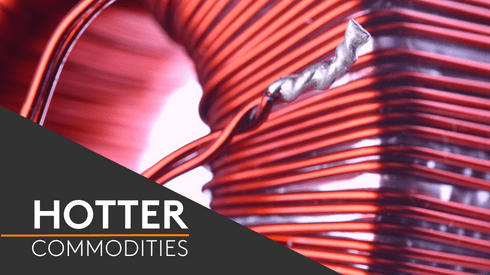The emergence of two separate pricing mechanisms took place in late 2022, with Chinese participants opting to move away from the use of the London Metal Exchange official nickel price as the underlying basis, instead opting for an ‘outright’ calculation.
Traditionally, MHP has been priced as a percentage, or payable, to the underlying LME nickel cash price, with the percentage often changing depending on market conditions, as well as the quality of the material.
Fastmarkets most recently assessed the nickel mixed hydroxide precipitate payable indicator, % London Metal Exchange, cif China, Japan, and South Korea at 70-74% on April 14, down from 71-75% on April 6.
The alternative pricing method, which produces an ‘outright’ price for MHP, involves a calculation based upon the underlying prices of nickel sulfate as well as tolling costs and import taxes.
Fastmarkets assessed the nickel mixed hydroxide precipitate outright price, cif China, Japan, and South Korea at $17,000-17,300 per tonne on April 14, unchanged week on week.
Weakening nickel sulfate pressures MHP
Due to linking with nickel sulfate prices, particularly in the domestic Chinese market, outright prices for MHP can often be highly volatile, and typically follow price trends with the downstream market.
During a period of high prices for sulfate in China in March, MHP prices peaked at $18,000-18,600 per tonne on March 17, before eventually trending lower after demand for nickel sulfate softened.
Nickel sulfate prices in China continue to come under pressure and have now declined for seven straight weeks due to weakening demand, but market sources were not yet seeing a floor level.
“The market is not bottoming out yet, and I see a floor at 30,000 yuan per tonne,” a seller in South-eastern China said.
Fastmarkets’ weekly price assessment for nickel sulfate min 21%, max 22.5%; cobalt 10ppm max, exw China was 33,000-34,000 yuan ($4,800-4,950) per tonne on April 14, down by 13.65% from 38,000-39,600 yuan per tonne on March 10.
The falling sulfate prices have also raised concerns about potential cuts from producers, who are under pressure due to eroded margins.
“Producers are losing money under current prices, which could push them to go for production cuts someday,” a producer source said in Shanghai.
Spot trading activity for MHP was weak during the last assessment window. Only second-hand liquidity was reported to Fastmarkets, with an impasse emerging between consumers and producers.
Fastmarkets understands that consumers are unwilling to take tonnages at current price levels, although producers are also unwilling to reduce prices while trying to protect their margins.
Despite the recent significant declines in nickel sulfate prices, the outright price continues to trade at a higher level in comparison to the LME basis payables, causing additional confusion in the market.
“This market is so difficult to follow,” one consumer told Fastmarkets, noting that differentiation between the two prices makes it difficult to know “the true value of MHP.”
At present, when applied to a calculated weekly average of LME nickel cash prices, the current outright price is trading at around 73-75%.
Meanwhile, when applied to the same weekly average, the current payable level translates to $16,176 – 17,100 per tonne.
Confusion persists over mixed adoption of pricing mechanisms
The adoption of either pricing mechanism currently divides the industry.
The use of the outright pricing mechanisms is particularly present in China, due to poor sentiment and trust toward the LME nickel price.
Outside China, however, the use of LME payables remains the most common method of pricing for MHP because participants seek to keep products connected to the exchange to access hedging mechanisms.
The consequence of this is that, depending on the pricing mechanism adopted, a market participant can find themselves at a competitive advantage or disadvantage.
There is also a degree of concern around the lack of clarity in how outright prices are often calculated due to the opaque nature of the market at present.
Participants expect the two pricing mechanisms to eventually align as the market matures.
“This current [market] structure [regarding prices] is not sustainable,” one market source said.
Keep up to date with the latest news and insights on our dedicated battery materials market page.






